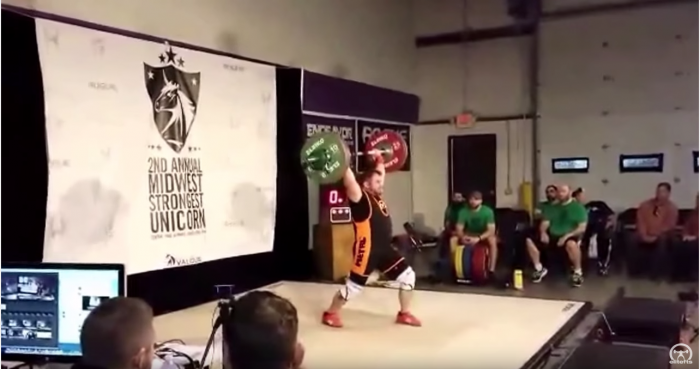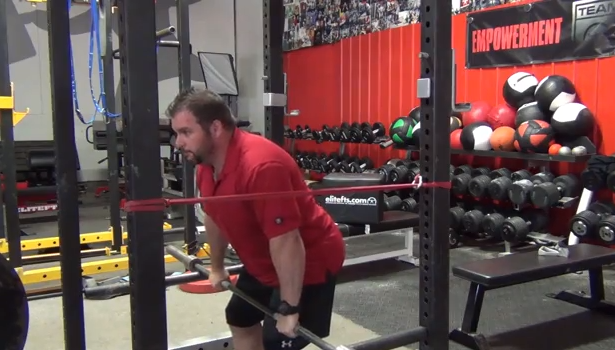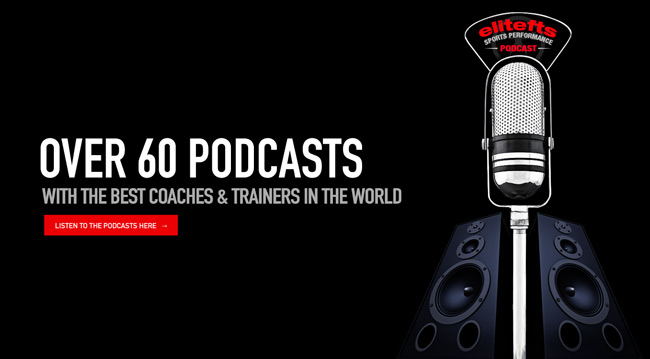
I used to take my interns once a year to elitefts™ when I was a strength & conditioning coach to give these young men and women the opportunity to interact with Dave Tate and Jim Wendler. It was invaluable for them, but also gave me some perspective and I always came away questioning my own philosophies. It goes back what Alwyn Cosgrove is credited fro saying.
"Methods are many - principles are few. Methods always change but principles never do."
One discussion Jim and I got into was about the using high pulls as opposed to cleans. At the time, my athletes were using high pulls and Jim had his reservations. We talked about the benefits of cleans as opposed to high-pulls, swings or other alternatives.
A case for cleans
Performing a clean form the floor, blocks, or from the hang all have one thing in common; the catch. The clean is one of those exercises where there is finality. You either complete a clean or you don't aside from the possibility of poor form; there are no questions of depth, lock-out, etc. There is rarely the notion of "he sort-of got it." From the starting position (wherever that is) to standing up with weight on your shoulders; there is a clean completion of a lift. This can get hazy with certain exercises like the squat.
Why I switched to High-Pulls...at least for a while
When talking to strength coaches, their biggest concern with teaching and implementing the Olympic lifts is the "catch" phase. I have had the privilege of being exposed to WSBB training, The Tier System, HIT Training, and everything in between. I felt everything made me a better coach because I was able to take what was applicable to my situation from multiple viewpoints. Anytime you learn from someone from a different viewpoint, you not only learn but you solidify your own reasoning. Asking yourself "why" is the most beneficial aspect of looking at other training philosophies.
No matter what the methodology, most of these coaches see validity in the triple extension. Some feel they can elicit enough training stimuli by incorporating jumps, med ball throws, KB swings, etc. The catch position of the clean is where most technique discrepancies happen. We spend a lot of time as coaches getting athletes to learn the triple extension. The added time teaching the catch, in some cases, can inhibit the athlete's ability to achieve full extension. Specifically, when teaching the athlete to catch in the "power position", the catch often becomes an afterthought. Many coaches don't want the bulk of potential mistakes being done during the "afterthought" phase of a lift.
I realize that there are a lot of coaches are split up into two categories in either extreme.
- I can teach 1000 beginners to perform a perfect clean with 80% of their max (which I guessed) in 3 minutes.
- I would need 2 years just to get one athlete to perform a decent clean with 50% of their max.
You either can teach a clean to anyone of your've never seen a good clean in this country. With the popularity of weighting on the rise, there are more coaches down the middle.
The problem with the high pull
The high-pull exercise inherently has a multitude of variations. We used to teach a re-set of the feet (I dare not say foot-stomp). Basically execute the a violent triple extension with the momentum of the bar being initiated by the hips. The elbows follow. The arms can never initiate the movement. Some coaches like Steve Pulcinella has used a more flat-footed approach. Both work.
The other variation (and most diverse) is how high the bar is pulled. This one factor definitely makes the high pull very subjective and we as coaches need to reduce the grey area. One crucial mistake (and probably the most common) is the athlete pulling their chest down to meet the bar. This often happens, like most technique errors do, when the bar is simply too heavy.
For more on technique as it relates to load, click on the link below.
Is Technique Work Hurting your Technique?
Standardizing the High-Pull
I read an article about 10 years ago by (I think) Charles Staley about the "Targeted High Pull". This was performed by taking a bungee cord and hooking it up in the power rack. The bungees would be set-up at the height here the athletes needs to pull the weight to. This gives a "target" for the athlete and can reduce that grey area.
When I didn't have a power rack, I used a pool stick through the holes on a squat stand.
Auto-Regulatory Training with the High-Pull
An easy way to adjust intensity without changing weight for an exercise like the high-pull. One way he did this was:
Week 1: Barbell High Pull to ArmPit
Week 2: Barbell high Pull to Xyphoid Process
Week 3: Barbell High Pull to Belly-button
Obviously, adjusting bungees to this level alleviates confusion. You could set it up so athletes add weight until they can't hit the target height.
Another option is to adjust grip width. Same principle as above. Go from snatch grip to a hybrid to clean-grip on successive weeks.
For a more detailed look at this exercise, click on the link below.
Elitefts™ Targeted High Pull with Bands
Which to choose
Teaching Olympic lifts to large groups is difficult and the catch position adds to this challenge. Keep in mind these points:
1. Teaching Kettelbell variations, DB variations, and High-Pulls can be almost as time consuming.
2. When teaching athletes Olympic lifts, keep in mind you aren't going to the Olympics, they just need to be efficient enough to use enough of a load to benefit from the movement. Enough load to elicit a training effect without altering technique.
3. The benefits of the catch position may outweigh the risks. But, that is for you to decide for your situation.
Just remember this...
Choose either cleans or high-pulls for your program. Don't do both. They are different enough to not have a carry over but similar enough to adversely effect the technique of the other.
In my opinion, it is the same for a clean from the floor and a conventional deadlift. I feel it is detrimental to have both in the same program during the same cycle. We would choose either a Trap Bar to deadlift and not perform conventional for almost all athletes.
I hope this helps. If you have any other thoughts about using one or the other, let me know. Some coaches even use the high pull as a progression for the clean. I am not saying they're wrong, just that I feel there isn't enough benefit to use both.
TRAINING
Mobility Work and Static Stretching. Starting the next cycle tonight.
Going to do everything I can to get back to a 4-day training cycle. With travel, conferences, and vacations, that has been difficult to do.
- Monday/ Tuesday - Squat
- Tuesday/ Wednesday - Bench
- Thursday/ Friday - Deadlift
- Friday/Saturday - OHP
Obviously, not trying to go 3 days in a row.
This song by Foals....










